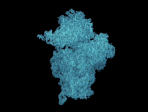 00:31:00
00:31:00
Seeing is Believing – A Hundred Years of Visualizing Molecules
It has been a hundred years since molecules were first visualized directly by using x-ray crystallography. That gave us our first look at molecules as simple as common salt to one as complex as the ribosome that has almost a million atoms. In the las....
More details | Watch now 00:28:00
00:28:00
Optical Microscopy – the Resolution Revolution
Throughout the 20th century it was widely accepted that a light microscope relying on conventional optical lenses cannot discern details that are much finer than about half the wavelength of light (200-400 nm), due to diffraction. However, in the 199....
More details | Watch now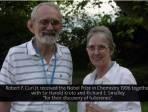 00:34:00
00:34:00
The Dawn of the Fullerenes: A Research Adventure
When he received the 1996 Nobel Prize in Chemistry together with Richard E. Smalley (who also worked at Rice) and Sir Harold Kroto (at the time at the University of Sussex, UK), this was a true example of national and international scientific collabo....
More details | Watch now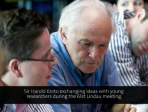 00:32:00
00:32:00
C60-Buckminsterfullerene: Not just a Pretty Molecule
Amongst the Nobel Laureates lecturing in Lindau, Sir Harold Kroto would probably earn the award for the most unusual and characteristic way of presenting. This lecture, which is the first he ever gave in Lindau, is no exception. Kroto`s way of presen....
More details | Watch now 00:29:00
00:29:00
Créativité Sans Frontières
Children are not the only ones who instinctively appreciate the elegant beauty of highly symmetric structures such as the soccer ball and “play” with them. Artists, architects, scientists, mathematicians and engineers are also fascinated by elega....
More details | Watch now 00:35:00
00:35:00
Science – Lost in Translation?
This presentation explores the way in which the ideas and advances of people like Copernicus, Galileo and Kepler to Newton and Leibniz laid the foundations of Science. The Enlightenment was a byproduct of this philosophical breakthrough and right f....
More details | Watch now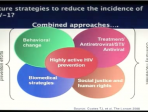 00:31:00
00:31:00
HIV, a Discovery Highlighting the Global Benefit of Translational Research
The fantastic progress made in medicine led the scientific community to hope about the complete eradication of infectious diseases in the middle of the 20th century. The sudden emergence of AIDS in the early 80's cruelly reminded us that this dream ....
More details | Watch now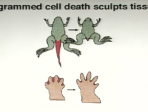 00:33:00
00:33:00
Programmed Cell Death in Development and Disease
Programmed cell death (often referred to as apoptosis) is a normal feature of animal development and tissue homeostasis. The misregulation of cell death has been implicated in a diversity of human disorders, including cancer, autoimmune diseases, he....
More details | Watch now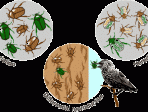 00:42:00
00:42:00
Natural Selection and the Future of Life
In his lecture Professor Christian Rene de DuvŽ gives a rough overview on the history of life starting about 3.5 billion years ago with the first cells up to the appearance of the first primates 70 million years ago, and he states that all organisms....
More details | Watch now 00:45:00
00:45:00
On the Genetic Basis of Morphological Evolution
Darwin's theory of evolution states that variation of the shape and pattern of the adults rather than the embryos are the basis for natural selection. In order to understand how morphological variation arises, it is important to identify the genes th....
More details | Watch now 00:28:00
00:28:00
DNA between Physics and Biology
The association of DNA with water is known since the deciphering of its double helical structure by X-Ray diffraction in 1953 (Watson, Crick, Wilkins and Franklin). However the power of DNA for organizing water seems to go far beyond the direct fill....
More details | Watch now 00:32:00
00:32:00
Cultural Values of Scientific Knowledge
The acquisition of scientific knowledge largely depends on the availability of appropriate research approaches and methodologies. Novel scientific knowledge represents cultural values. On the one hand, it enriches our world-view with impacts on our....
More details | Watch now
